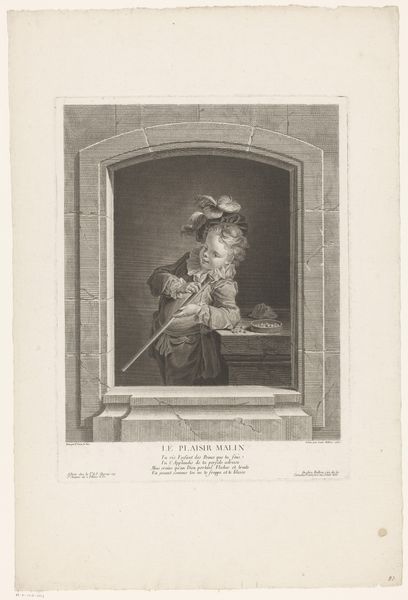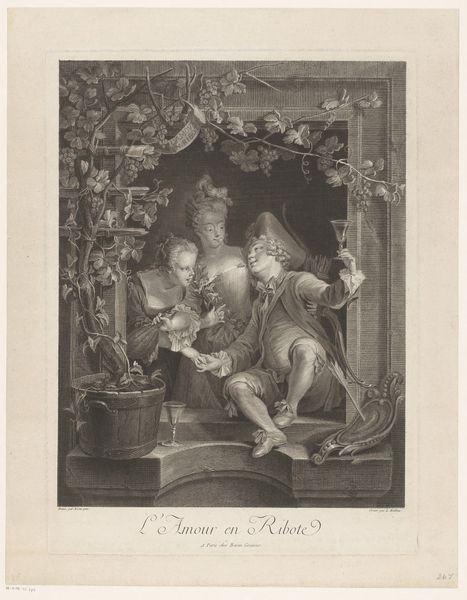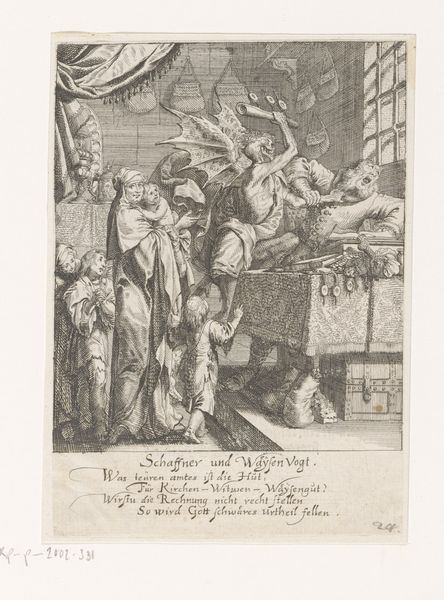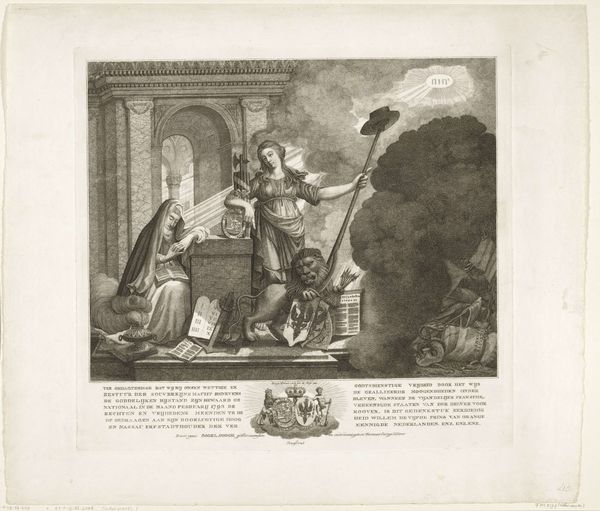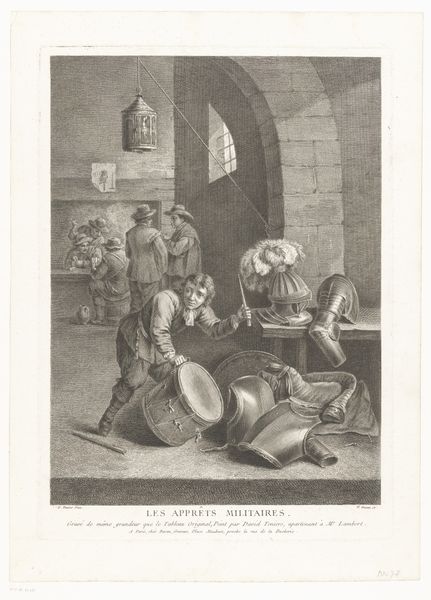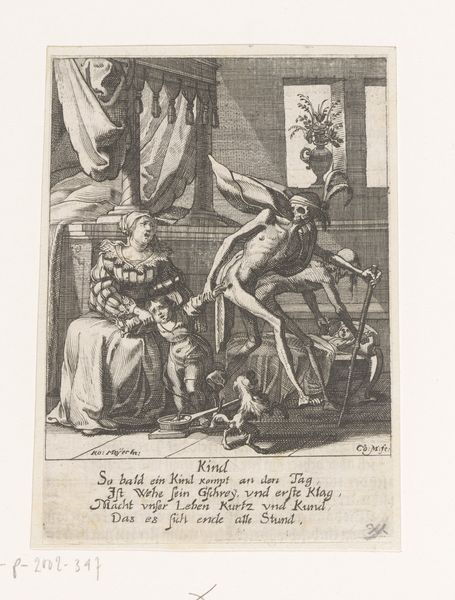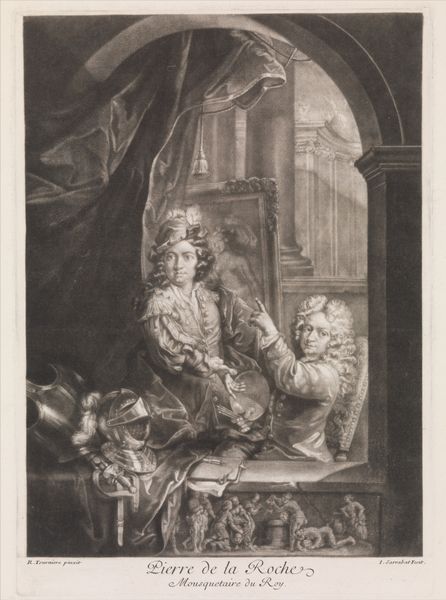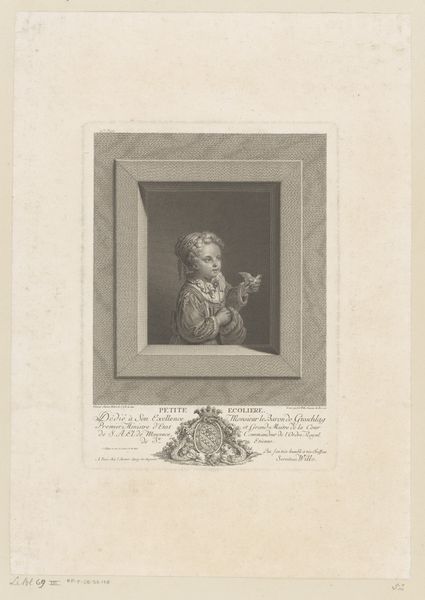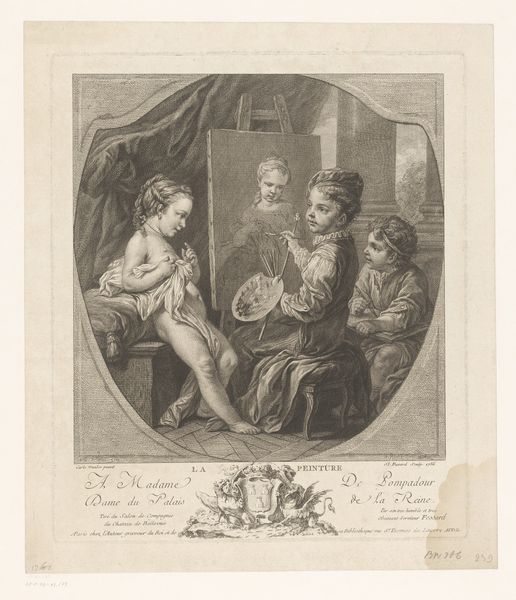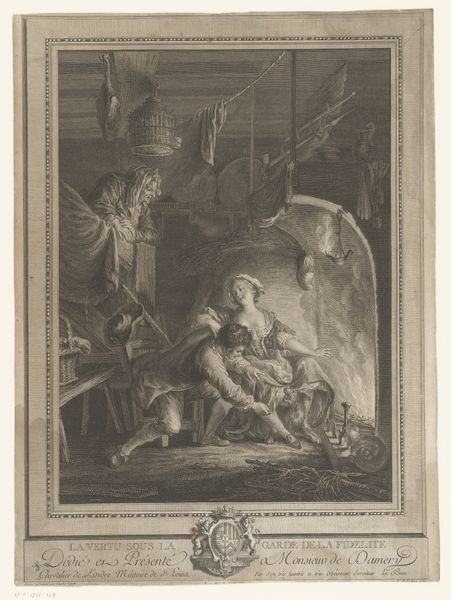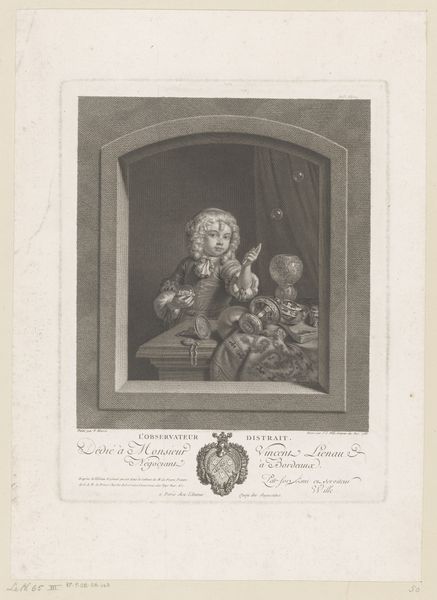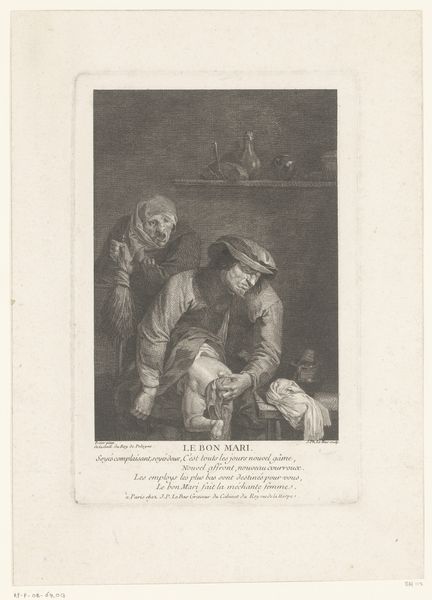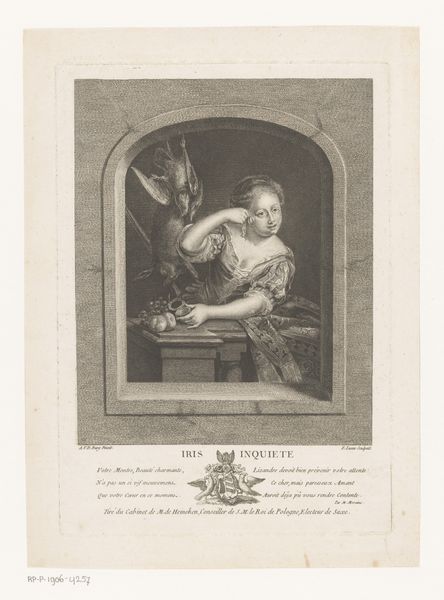
Dimensions: height 321 mm, width 225 mm
Copyright: Rijks Museum: Open Domain
Johann Elias Haid created this etching, titled Keisnijder, in eighteenth-century Germany. The image shows a scene of medical practice, but it's less about literal medicine and more about social commentary. The print satirizes the medical profession, portraying a 'Keisnijder,' or stone cutter, a type of traveling surgeon who performed risky operations like removing bladder stones. The procedure was often dangerous, and quack doctors were known to exploit vulnerable patients. Haid’s print uses humor to expose the potential for deception and exploitation within the medical field. Note the quack is overdressed, suggesting status, whereas his office is in disarray. Prints like this offer a window into the social anxieties of the time. To understand the print’s full impact, we can research medical practices, social hierarchies, and the role of satire in eighteenth-century German culture. By looking at the institutions of medicine and art, we can better understand its meaning and social impact.
Comments
No comments
Be the first to comment and join the conversation on the ultimate creative platform.
